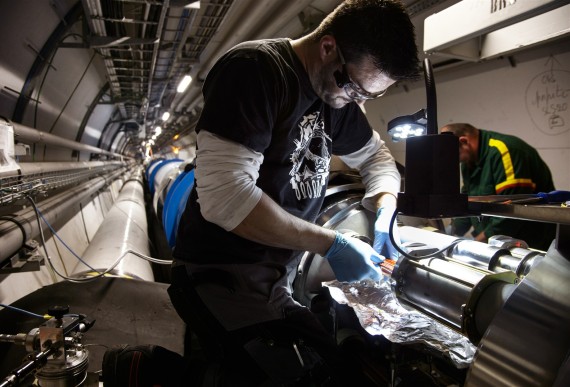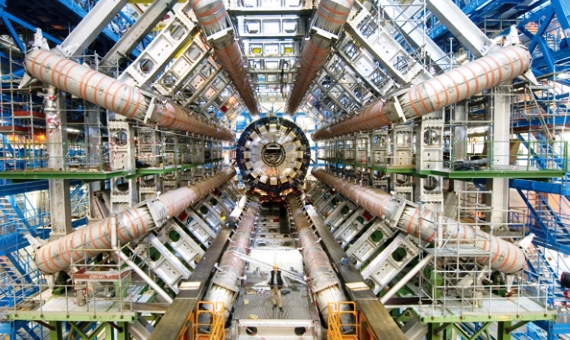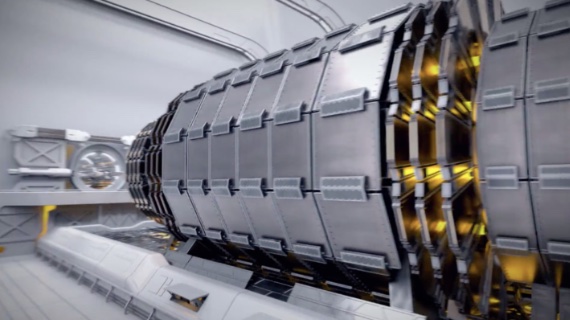Nobel Prizes are rarely awarded in the heat of the moment. There is usually a period of maturation before it is considered appropriate to honour a discovery made years, sometimes even decades, earlier. But the 2013 Nobel Prize in Physics was an exception. In July 2012, researchers at the European Laboratory for Particle Physics (CERN) in Geneva announced the discovery of a long-sought particle, the Higgs boson. Fifteen months later, the Royal Swedish Academy of Sciences announced the award of its Physics Prize to Peter Higgs and François Englert, the authors of the theory postulating the existence of this particle. These were the glory days of the Large Hadron Collider (LHC), the world’s largest particle accelerator, which made the discovery possible. But a decade later, what has become of the most expensive and grandiose machine in the history of science?
When the 2013 Nobel Prize was announced, no one was surprised by what seemed like a foregone conclusion. Following the announcement by CERN, the late theoretical physicist Stephen Hawking had spoken out in favour of awarding the prize to Higgs, despite the fact that the discovery of the boson had cost Hawking a $100 bet. But overall, few would have doubted that it was an act of justice to reward the success of the LHC, which had cost some three billion euros to build and whose 27-kilometre ring stretches between Switzerland and France.
The discovery of the Higgs boson explained the origin of the mass of all visible matter as we know it, putting the finishing touches to the so-called Standard Model. The main significance of the discovery was that it completed and confirmed the framework on which theoretical physicists had based their predictions for decades, and it was this confirmation that caused Hawking’s disappointment, as he had predicted a more interesting scenario for theorists if the so-called “God particle” never manifested itself.
Although the LHC’s most sought-after target was reached in its first round of operation, this by no means implies that the accelerator has lost its raison d’être, nor that it has been inactive since then. In fact, according to CERN researcher Fabiola Gianotti, “the discovery of the Higgs boson was just the beginning of the LHC’s journey.” But after three years of operation, the machine needed some care. In February 2013, technicians took it offline and subjected it to a thorough process of maintenance and updating that lasted 16 months.

Finally, in June 2014, CERN announced that the LHC would be activated again in 2015 for a new three-year round of research. That same month, engineers finished connecting the superconducting electromagnets that guide the proton beams along the ring to make them collide, a task that CERN says is “like shooting two needles ten kilometres apart with such precision that they meet halfway.” To accelerate the particle beams to near-light speeds, the electromagnets must be cooled with liquid helium to -271.3°C, a temperature below that of outer space. On 5 April 2015, the machine started up again to begin producing collisions in the LHC’s four main detectors or experiments, called ATLAS, CMS, ALICE and LHCb, respectively.
What made this second round of operation different from the first was the energy at which the collisions would take place. During the first three years of the LHC’s operations, protons were smashed together at 7 teraelectronvolts (TeV), only half the machine’s capacity. In this second phase, the particles would collide at 13 TeV, still below the LHC’s maximum energy (14 TeV), but at a previously unreached scale, which, according to CERN’s Director General, Rolf Heuer, meant having “a new machine, ready to place us on the path toward new discoveries.”
During this second round, the engineers operating the machine focused on increasing the luminosity, a parameter that measures the number of collisions that occur on the surface of the tube section per unit of time. This allowed them to increase the luminosity to twice the design value, with a higher number of collisions and at a higher energy than in the first round. On 10 December 2018, the LHC was switched off again, in a second shutdown aimed not only at regular maintenance, but also at starting a massive upgrade to a High Luminosity Large Hadron Collider (HL-LHC), which will increase this parameter by a factor of ten in 2028-29.

On 22 April 2022, the LHC began its third round, with an energy of 13.6 TeV, which will continue until 2026. Then there will be a further break in which the HL-LHC upgrade will be completed.
The most powerful accelerator ever built
In addition to its major discovery—the Higgs boson and its properties—the LHC has made a host of other less heralded but hugely important discoveries in the years since the first collisions in 2009. These include the observation of many more particles, the discovery of more than 50 new ones, the creation of quark-gluon plasma—a type of matter whose density is only exceeded by black holes, and which filled the early universe after the Big Bang—and the testing of theories of supersymmetry, an extension of the Standard Model that would fill in some gaps and could pave the way towards a unifying theory, popularly known as the Theory of Everything. The LHC results have been transformed into thousands of published studies.
Despite all this, the experts themselves acknowledge that every particle physics experiment suffers a decline in scientific performance over the years as the machine reaches the limits of its capabilities. There have been many discoveries, but none that represent a paradigm shift, a foray beyond the Standard Model. This is why the improvements to the HL-LHC should make it possible to observe processes that are currently beyond the reach of the LHC. This new evolution of the collider is expected to boost its discoveries in the search for new physics beyond the Standard Model. Physicists are confident that this new incarnation will spark the biggest revolution in physics in a hundred years. One of the hopes that has eluded the LHC is the possible discovery of WIMPs, or Weakly Interacting Massive Particles, one of the proposed candidates for dark matter, which according to current theory makes up 85% of all matter in the universe.

But there will come a time, probably around 2040, when even the HL-LHC will be too small. Physicists are now dreaming of the next step in the second half of the century: the Future Circular Collider (FCC), the most powerful accelerator ever built. Preliminary designs at CERN envisage a ring with a circumference of almost 100 kilometres, compared with the LHC’s 27 kilometres, running under Lake Geneva, where collisions of 100 TeV would be achieved.
For now, it is just a dream, and one that could be shattered: the 21 billion euros it would cost to build does not convince even all physicists; some argue that it is unlikely to discover new physics so revolutionary as to justify the investment. Today, the FCC project is still up in the air, but future support for this proposal may depend on the results of the new HL-LHC once it becomes operational.
Comments on this publication